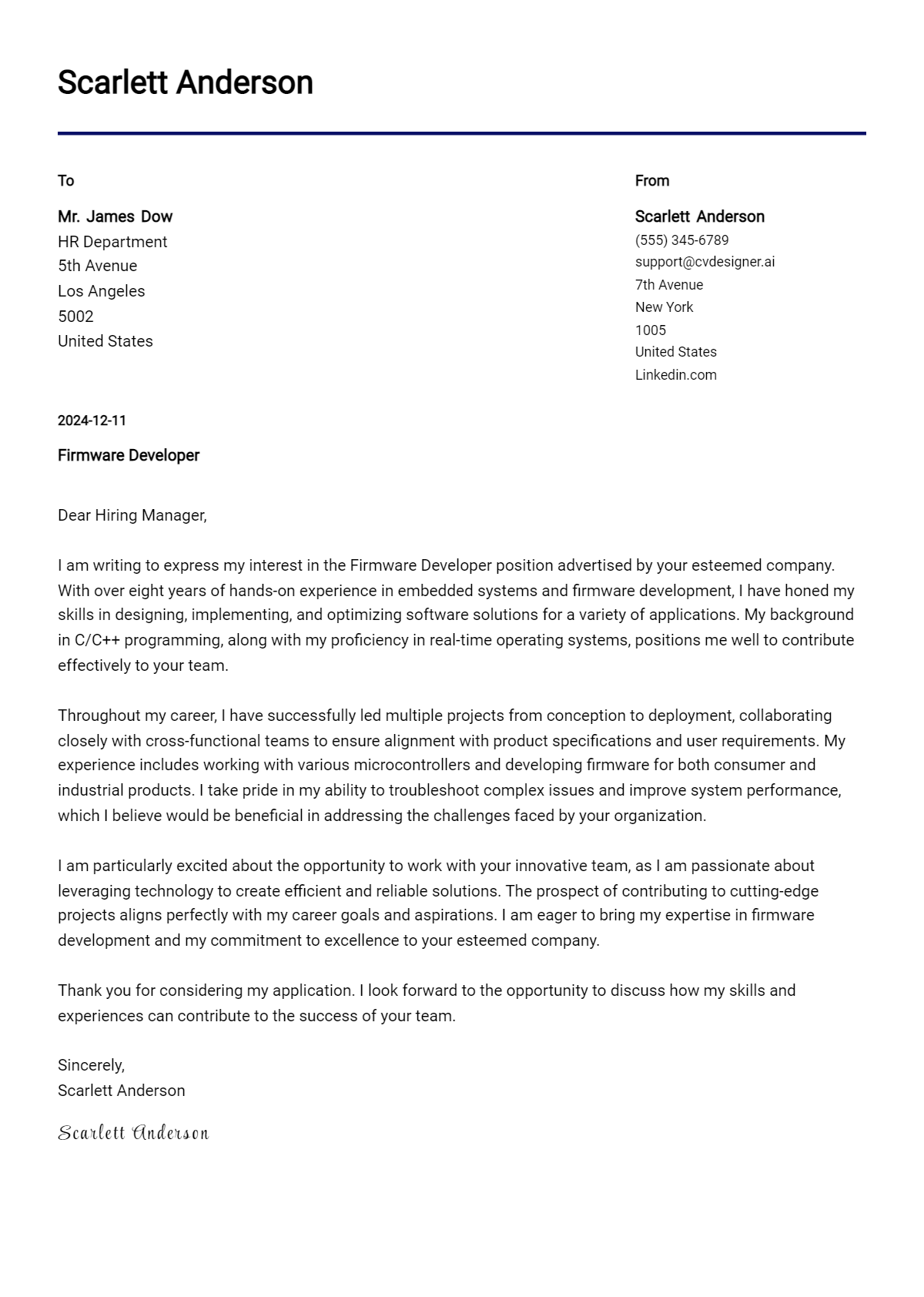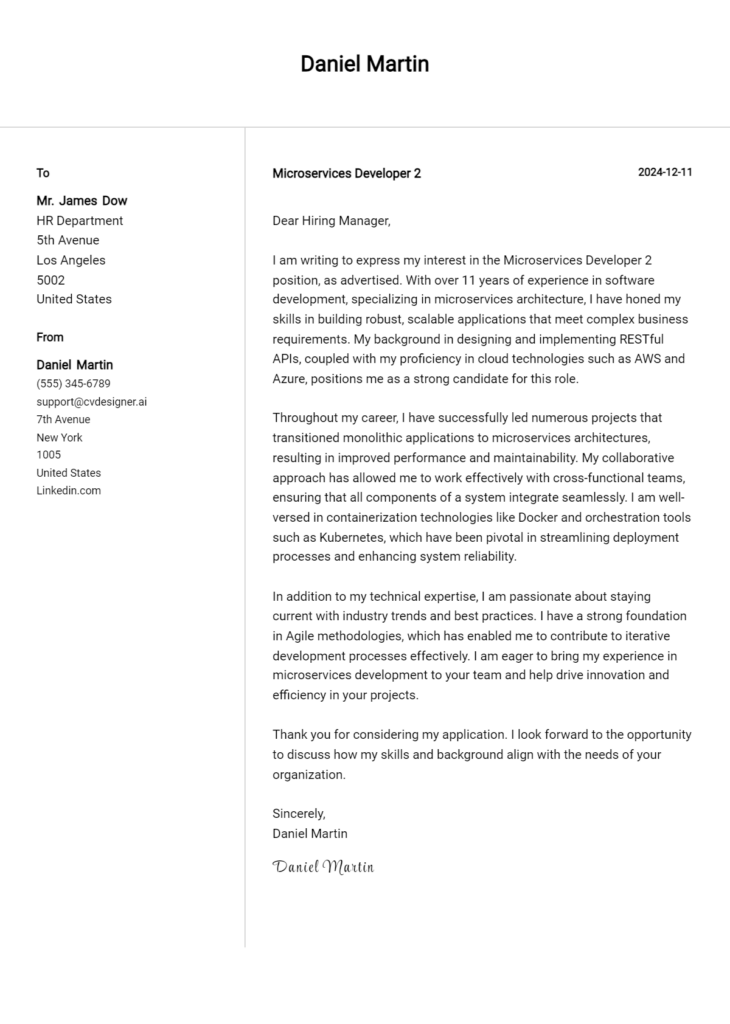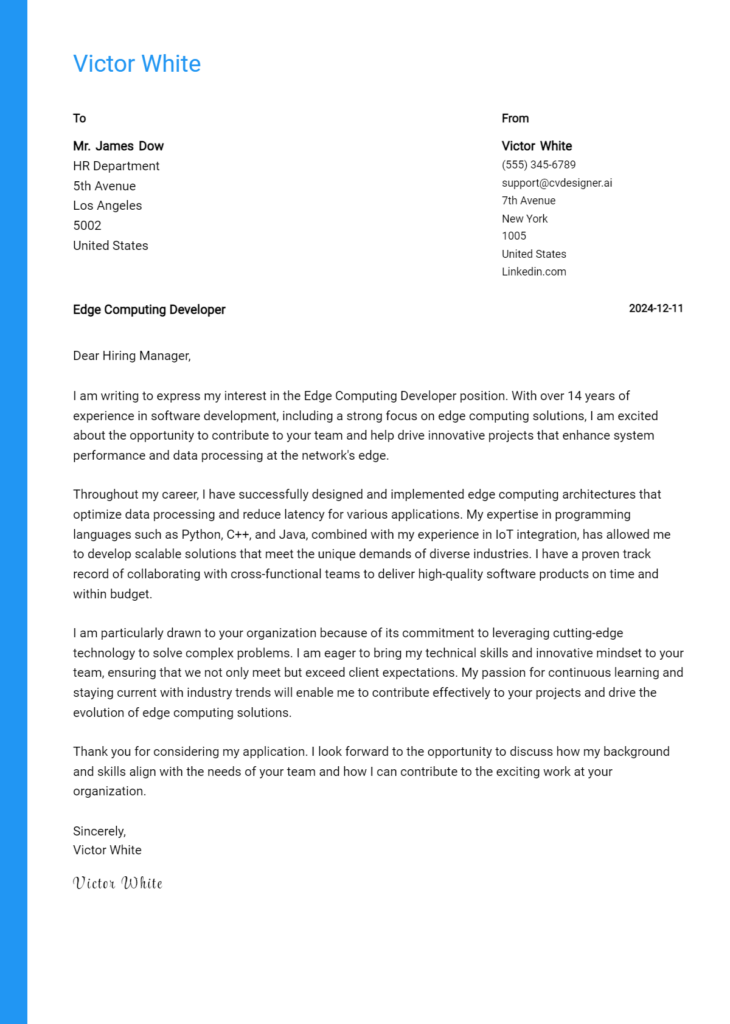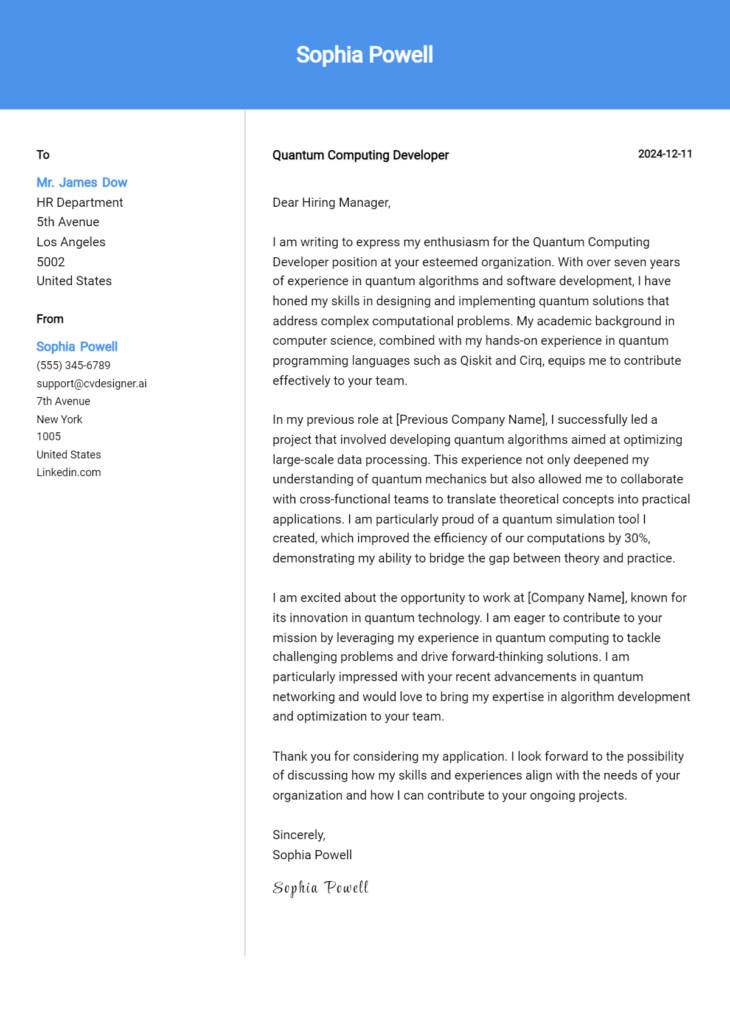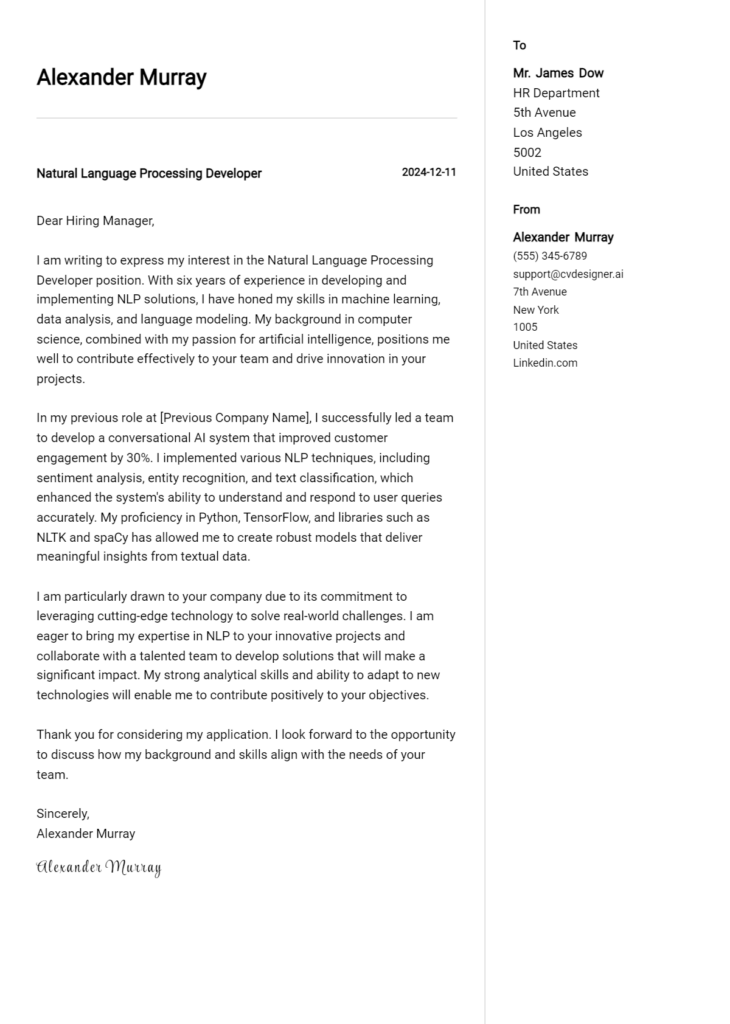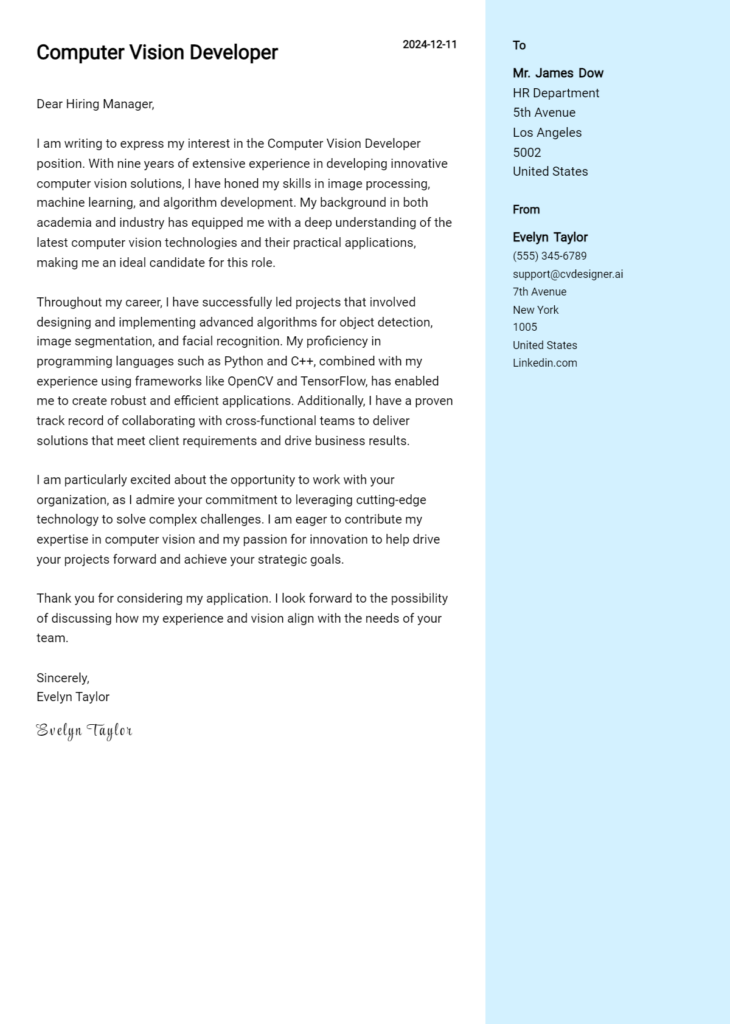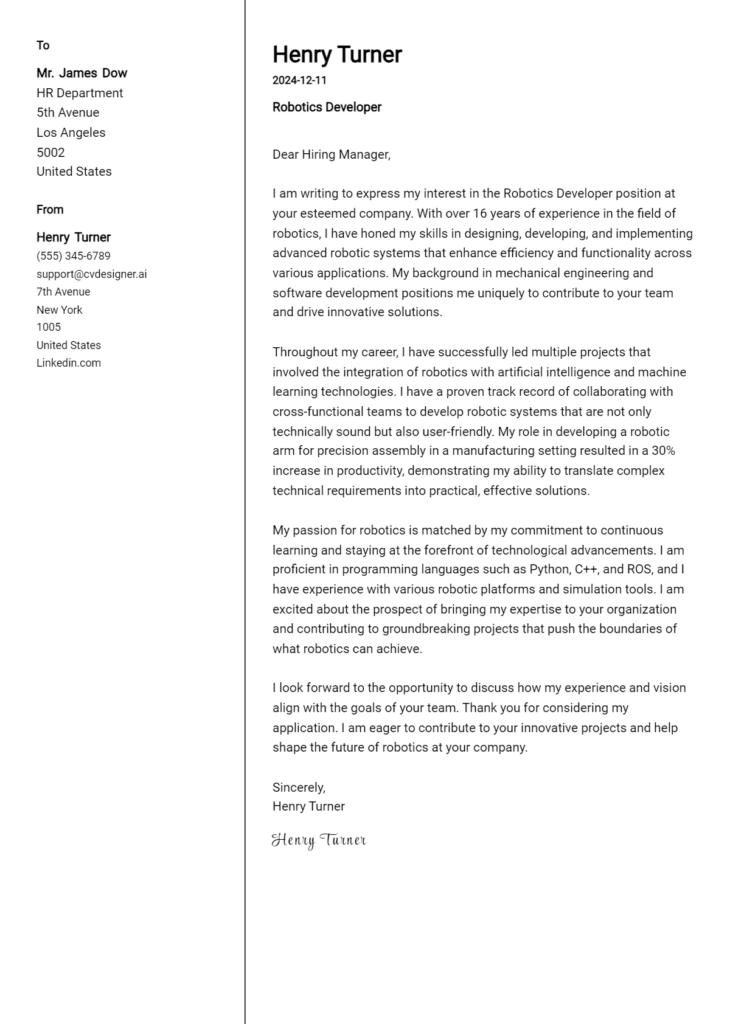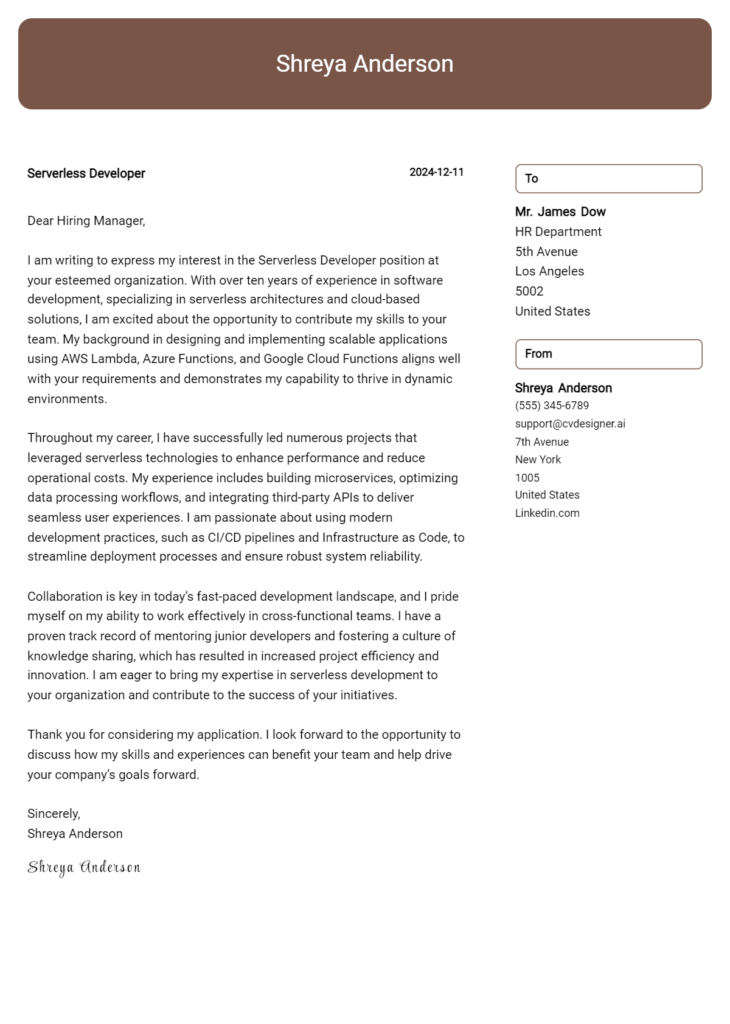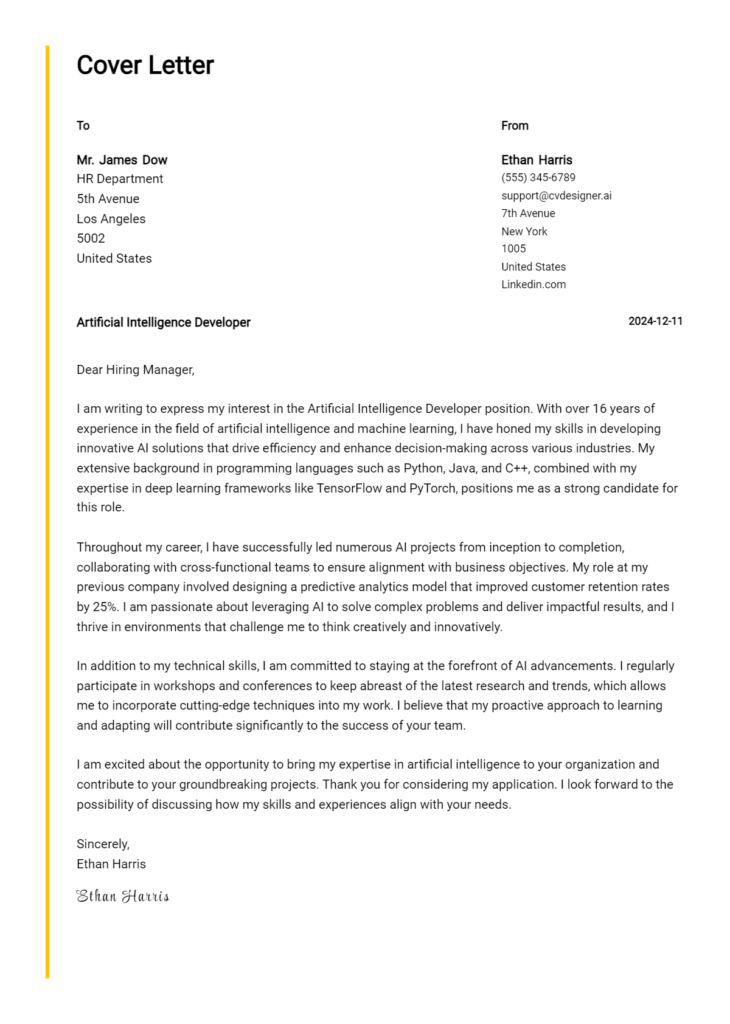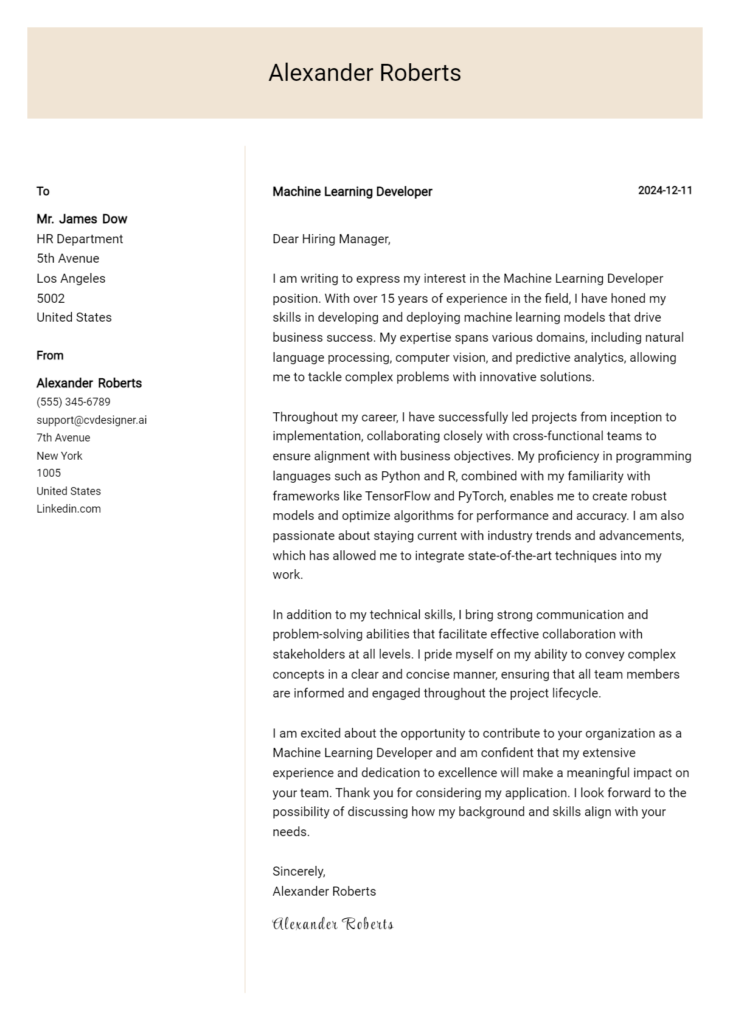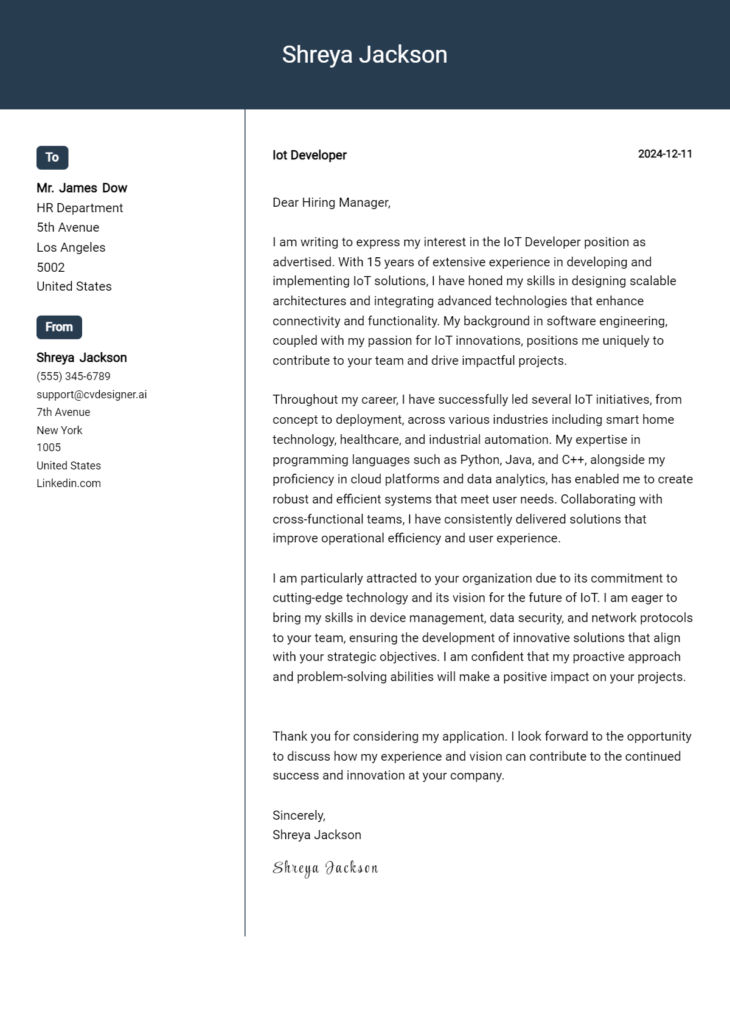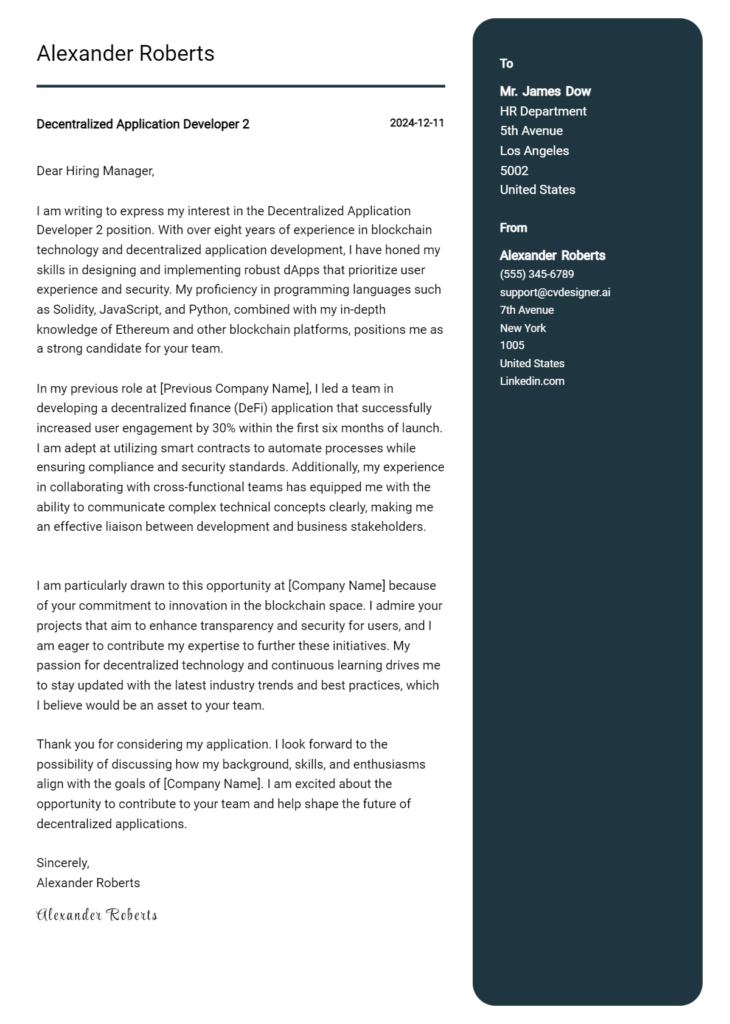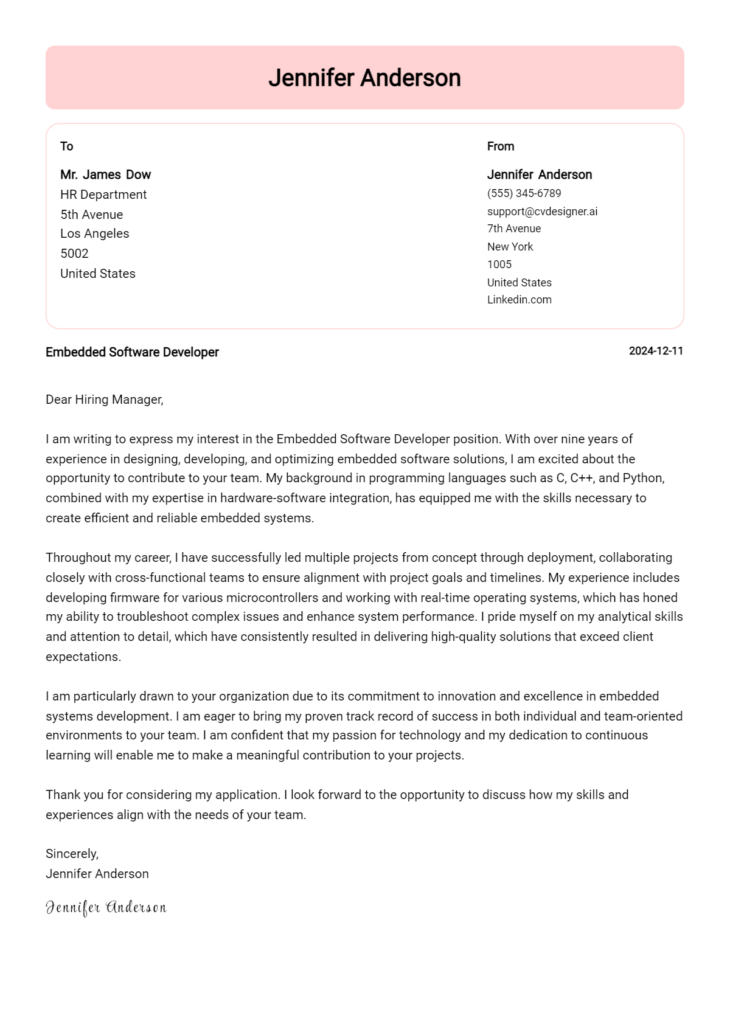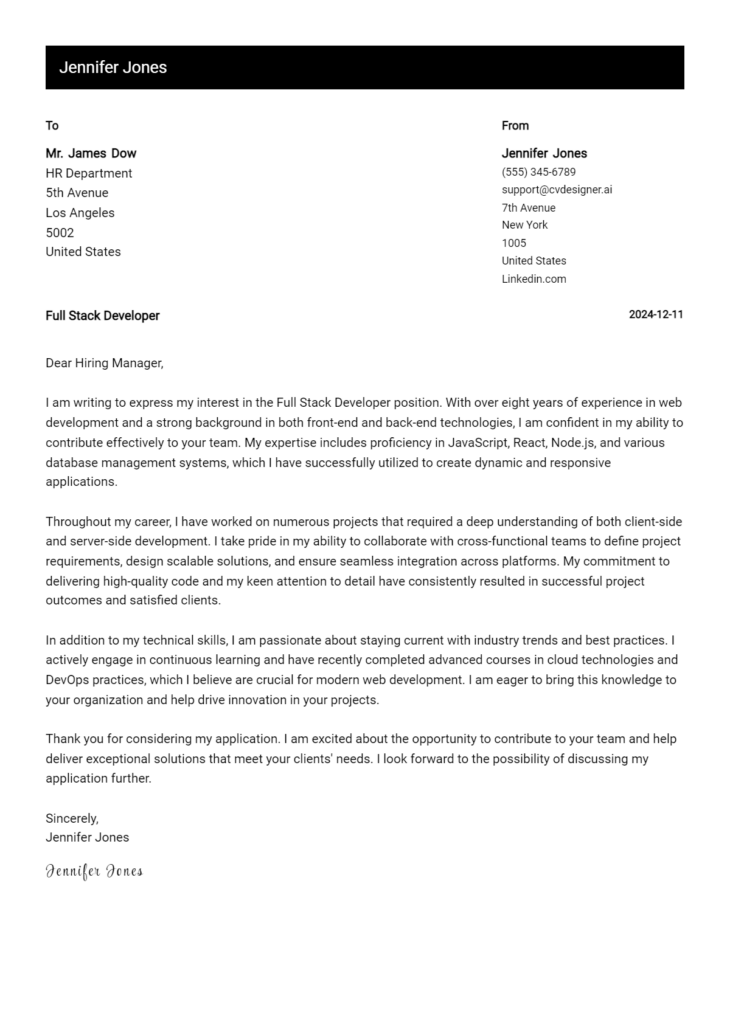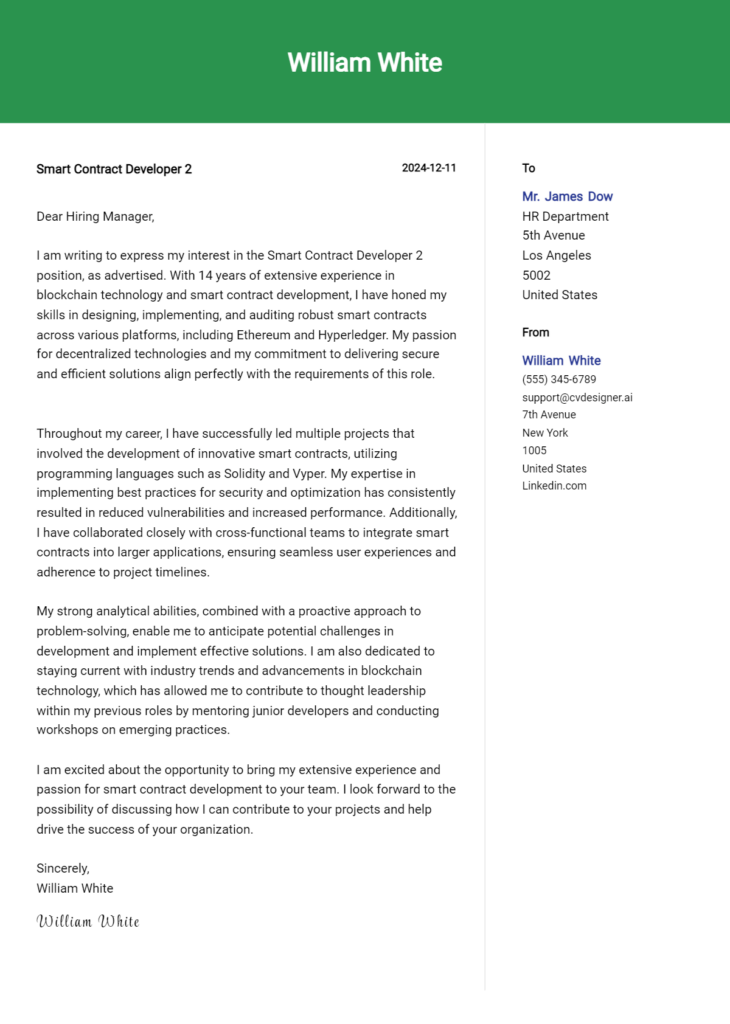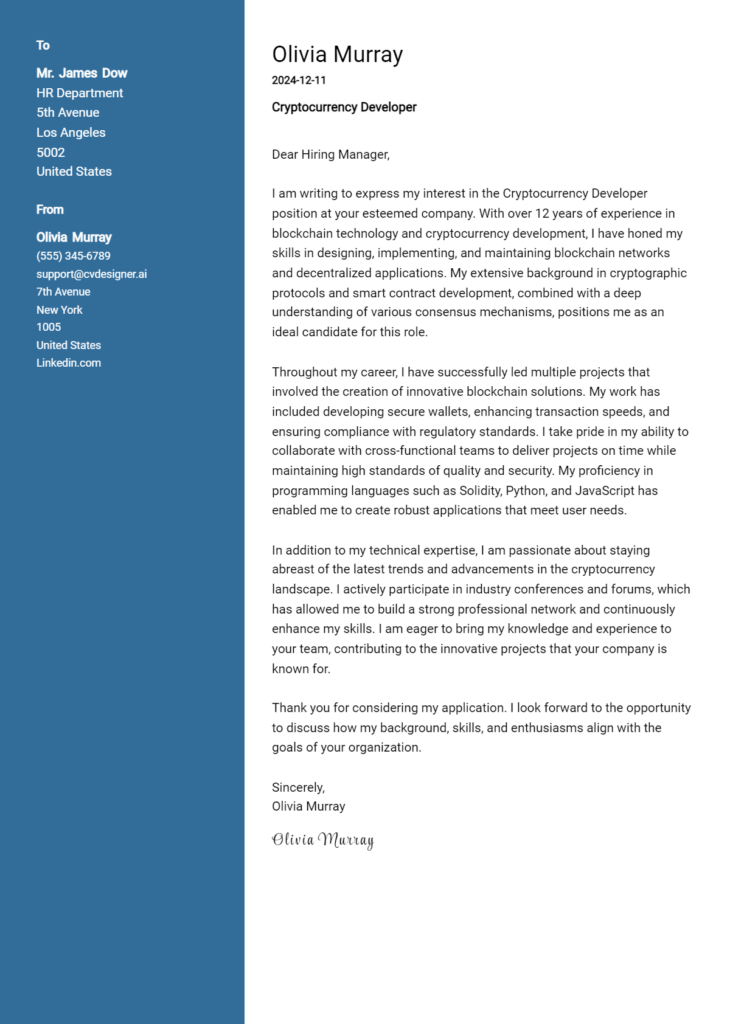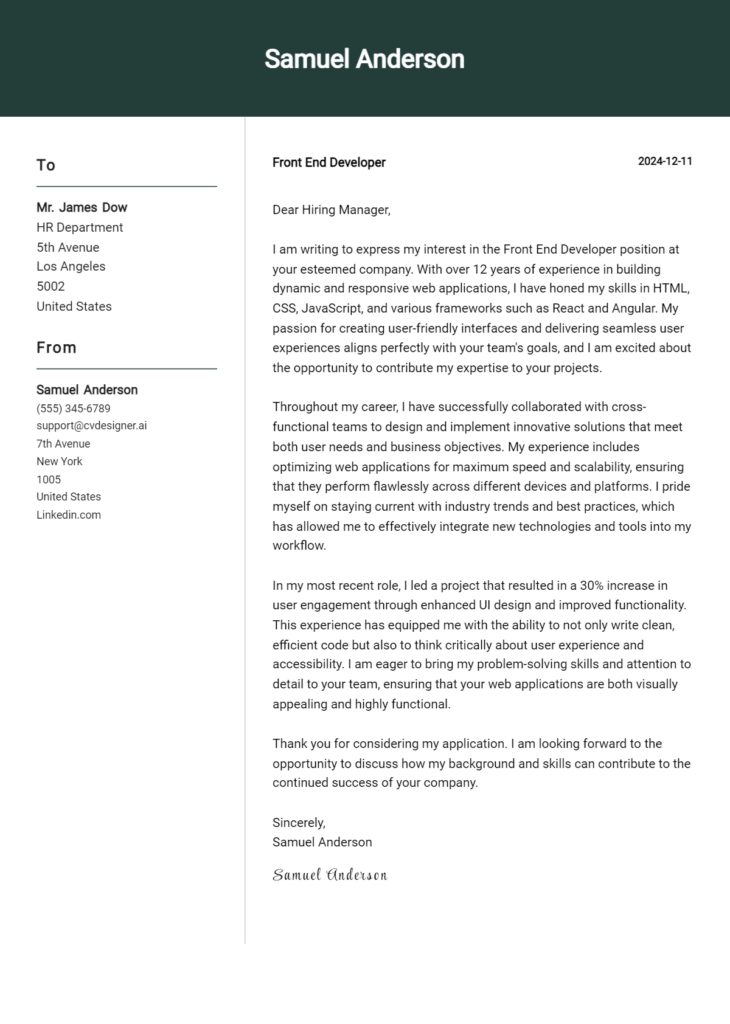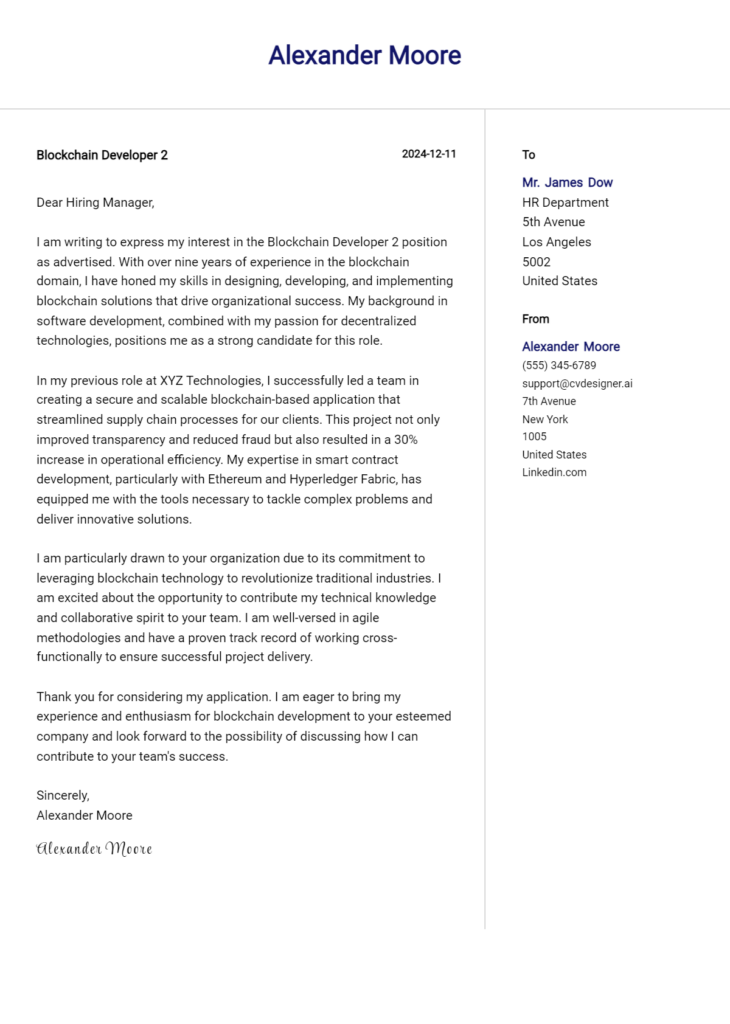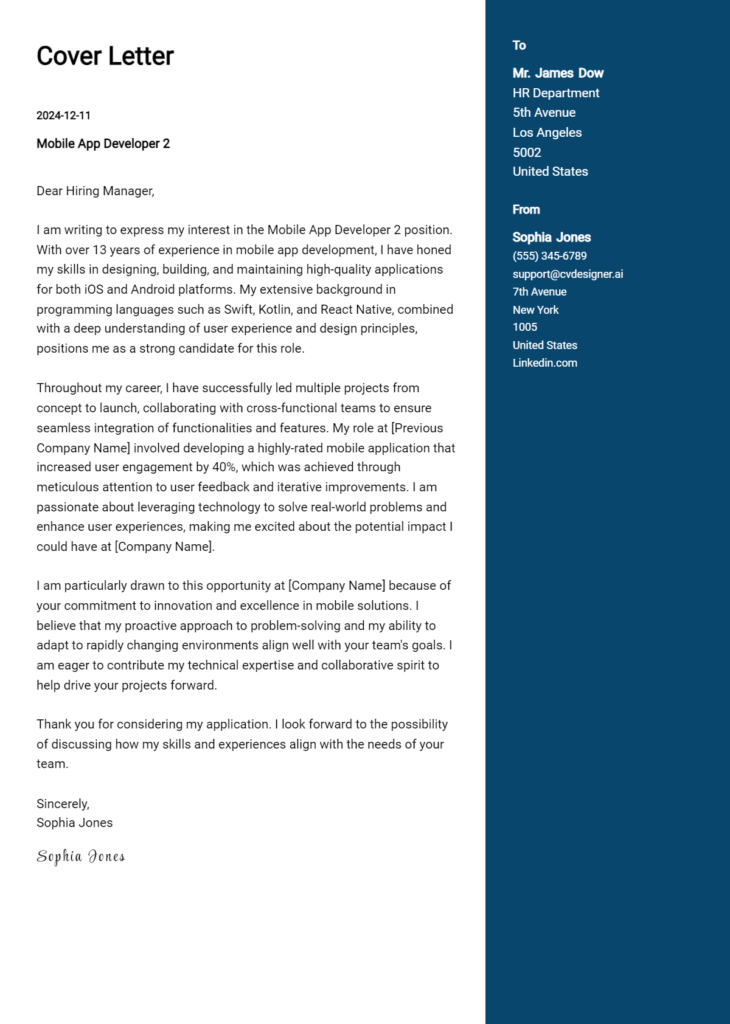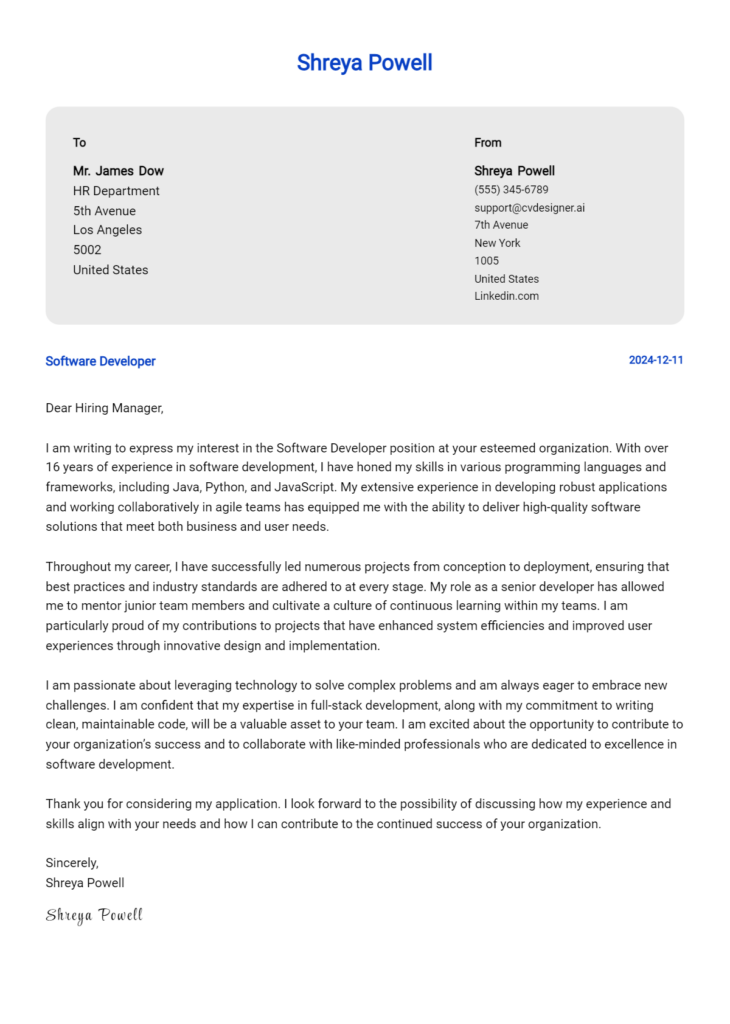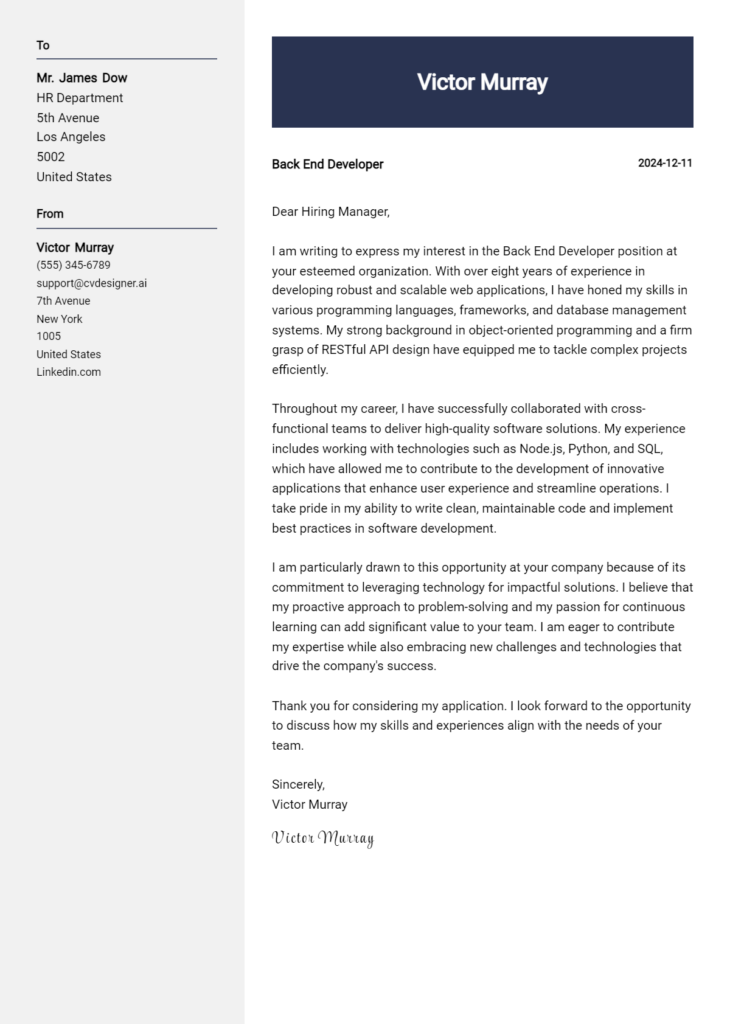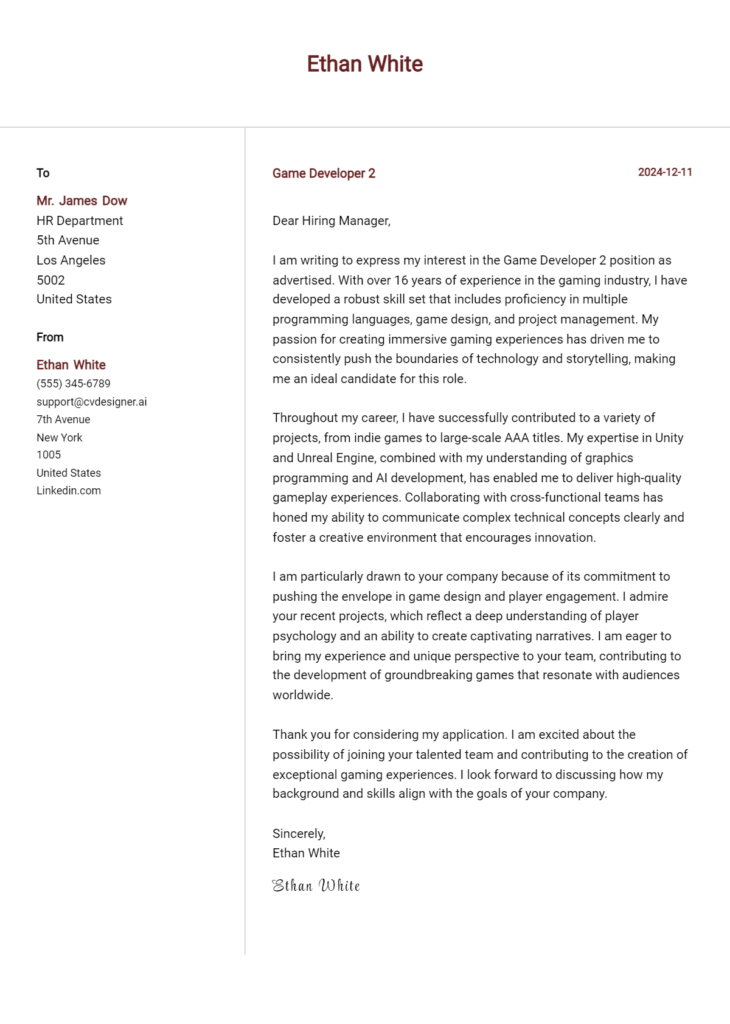Firmware Developer Cover Letter Examples
Explore additional Firmware Developer cover letter samples and guides and see what works for your level of experience or role.
How to Format a Firmware Developer Cover Letter?
Crafting a well-structured cover letter is essential for Firmware Developers because it reflects not only your technical skills but also your ability to communicate effectively. In a field where precision and clarity are paramount, the way you format your cover letter can make a significant impact on a hiring manager. A polished presentation demonstrates professionalism and attention to detail, traits that are critical in firmware development roles where even minor oversights can lead to major issues.
In this guide, we will explore the key components of a compelling firmware developer cover letter, providing insights and examples relevant to the tech industry.
We will focus on the essential parts of a professional cover letter, including:
- Cover Letter Header
- Cover Letter Greeting
- Cover Letter Introduction
- Cover Letter Body
- Cover Letter Closing
Each section serves a unique purpose in showcasing your qualifications and expertise. Let’s delve into how to structure your firmware developer cover letter to ensure it stands out in a competitive job market.
Importance of the Cover Letter Header for a Firmware Developer
The cover letter header is a critical component of any job application, especially for technical roles like a Firmware Developer. It sets the tone for your application and provides essential information at a glance. A well-organized header should include your contact information, the date of writing, and the recipient's details, such as the hiring manager's name and company address. Clarity and professionalism are paramount, as they create a positive first impression and reflect your attention to detail—an essential quality in firmware development.
Below are examples of a strong and weak cover letter header for a Firmware Developer:
Strong Example
John Doe 1234 Elm Street Tech City, TC 12345 johndoe@email.com (123) 456-7890 October 1, 2023 Jane Smith Hiring Manager Tech Innovations Inc. 5678 Oak Avenue Tech City, TC 67890
Weak Example
john d. email@example.com 10/1/23 manager company name
The Importance of the Cover Letter Greeting
The greeting of your cover letter is a critical element that sets the tone for the entire document. A well-crafted greeting not only demonstrates professionalism but also shows that you have taken the time to personalize your application. By addressing the hiring manager directly, you create an immediate connection and establish a sense of respect and interest in the position. To avoid sounding generic, it’s essential to research the recipient's name whenever possible, as this simple gesture can distinguish your application from others. Here are some tips to consider: if you can't find the hiring manager's name, opt for a more specific title instead of a vague salutation.
Strong Greeting Example
Dear Dr. Smith,
Weak Greeting Example
To Whom It May Concern,
The Importance of a Well-Crafted Cover Letter Introduction for a Firmware Developer
A well-crafted cover letter introduction is crucial for a Firmware Developer, as it serves as the first impression and sets the tone for the rest of the application. This opening paragraph should be engaging enough to capture the hiring manager's attention, while also clearly expressing the candidate’s enthusiasm for the role. Additionally, it should briefly showcase key skills or achievements that align with the job requirements. A strong introduction can differentiate a candidate from others and lay a solid foundation for the remainder of the cover letter, while a weak introduction may fail to make a lasting impact.
Strong Example
Dear [Hiring Manager's Name], I am excited to apply for the Firmware Developer position at [Company Name], where my passion for embedded systems and over five years of experience in developing efficient firmware solutions can contribute to innovative projects. My recent achievement of optimizing a critical firmware component, resulting in a 30% increase in processing speed, exemplifies my commitment to excellence and my ability to deliver impactful results.
Weak Example
Hi, I saw the job listing for the Firmware Developer role at your company and thought it looked interesting. I have some experience in firmware development, and I think I could do the job.
Purpose of the Cover Letter Body for a Firmware Developer
The body of a cover letter for a Firmware Developer serves as a critical platform for the candidate to articulate their relevant skills, experiences, and the unique value they can bring to the company. In this section, candidates can highlight specific projects or accomplishments that demonstrate their technical expertise and problem-solving capabilities. For instance, mentioning a successful firmware upgrade that improved device performance or a collaborative project that involved cross-functional teams can effectively showcase the candidate's contributions to their previous employers. The goal is to create a compelling narrative that aligns the candidate's qualifications with the hiring company's needs, thereby enhancing their chances of securing an interview.
Strong Example
I am excited to apply for the Firmware Developer position at [Company Name]. In my previous role at [Previous Company], I led a project to redesign the firmware architecture for a line of IoT devices, which resulted in a 30% improvement in power efficiency. By implementing advanced debugging techniques and collaborating closely with the hardware team, we were able to reduce the time to market by two months. My experience with real-time operating systems and my proficiency in C and Python have equipped me with the skills necessary to contribute effectively to your team and drive innovation in your products.
Weak Example
I would like to apply for the Firmware Developer job at your company. I have written some firmware code before and I am familiar with C. I think I can help your team. I worked on a project, but it didn’t go very well. I am eager to learn and I hope to get a chance to prove myself.
Importance of the Cover Letter Closing for a Firmware Developer
The closing paragraph of a cover letter is crucial as it reinforces your qualifications, reiterates your enthusiasm for the position, and encourages the hiring manager to take the next steps, such as reviewing your resume or scheduling an interview. A strong closing not only summarizes your fit for the role but also leaves a lasting impression, making it more likely for the employer to engage with your application. On the other hand, a weak closing can undermine the impact of your cover letter, making it forgettable and less persuasive.
Strong Example
In conclusion, I am excited about the opportunity to contribute to your team as a Firmware Developer. My extensive experience in embedded systems and my passion for innovative technology align perfectly with the goals of your company. I would appreciate the chance to discuss how my skills can benefit your organization further. Thank you for considering my application; I look forward to the possibility of discussing this exciting opportunity with you.
Weak Example
Thanks for reading my letter. I hope you like my resume and maybe we can talk sometime.
Crafting an effective cover letter is crucial for any Firmware Developer seeking to stand out in a competitive job market. A well-written cover letter not only highlights your technical skills but also emphasizes your problem-solving abilities, understanding of the Software Development Life Cycle (SDLC), teamwork experience, and passion for continuous learning. Below are some tips designed to help you create a compelling cover letter that captures your qualifications and enthusiasm for the role.
Tips for Writing an Effective Cover Letter as a Firmware Developer
Highlight Technical Skills: Clearly outline your technical expertise in firmware development. Mention specific programming languages (like C/C++), microcontrollers, and development tools you are proficient in. Use examples from your past projects to showcase how your technical skills contributed to successful outcomes.
Demonstrate Problem-Solving Abilities: Firmware development often involves troubleshooting and optimizing systems. Share a brief anecdote demonstrating a challenging problem you faced in a previous role and how you successfully resolved it. This will illustrate your analytical thinking and practical approach to complex issues.
Showcase SDLC Knowledge: Employers value candidates who are familiar with the Software Development Life Cycle. In your cover letter, discuss your experience working through various phases of the SDLC, such as requirements gathering, design, implementation, testing, and maintenance. Providing details about your role in these stages can set you apart from other applicants.
Emphasize Teamwork: Firmware development is rarely a solo endeavor; it often requires collaboration with cross-functional teams. Highlight your experience working with hardware engineers, software developers, and project managers. Providing examples of successful team projects can demonstrate your ability to communicate effectively and contribute to a collective goal.
Express a Passion for Continuous Learning: The technology landscape is constantly evolving, making it essential for firmware developers to stay updated with new tools and methodologies. Mention any recent courses, certifications, or personal projects that showcase your commitment to professional development. This reflects your dedication to growth and adaptability within the field.
By integrating these tips into your cover letter, you can create a strong narrative that resonates with potential employers. If you're looking for further assistance, consider using our cover letter templates or a cover letter builder to streamline your writing process.
Common Mistakes to Avoid in a Firmware Developer Cover Letter
Crafting a compelling cover letter is essential for standing out in the competitive field of firmware development. Avoiding common mistakes can significantly enhance your chances of making a strong impression on potential employers. Here are some frequent pitfalls to watch out for and tips on how to steer clear of them:
Generic Content: Many candidates use a one-size-fits-all approach. Personalize your cover letter for each application by addressing specific skills and experiences relevant to the job description.
Neglecting Formatting: A poorly formatted cover letter can undermine your professionalism. Follow a clear cover letter format that enhances readability and organization.
Lack of Technical Details: Firmware development requires technical proficiency. Include specific programming languages, tools, or methodologies you are proficient in to demonstrate your expertise.
Overly Long or Short: Striking the right balance in length is crucial. Aim for a concise cover letter that effectively communicates your qualifications without rambling.
Ignoring the Company Culture: Failing to research the company can lead to a mismatch in tone and content. Showcase your understanding of the company’s values and how you align with them.
Spelling and Grammar Errors: Simple mistakes can be detrimental to your credibility. Always proofread your cover letter and consider using tools or asking a peer for feedback.
Not Including a Call to Action: Conclude your letter without a clear next step can leave employers unsure of your intentions. Express your eagerness for an interview or further discussion.
By avoiding these common mistakes, you can create a polished and effective cover letter that showcases your qualifications as a firmware developer. For inspiration, check out various cover letter examples to see successful formats and styles.
Cover Letter FAQs for Firmware Developer
What should I include in my cover letter as a Firmware Developer?
In your cover letter, you should include a brief introduction about yourself, highlighting your experience and skills relevant to firmware development. Mention specific programming languages and tools you are proficient in, such as C, C++, or Python, and any experience with embedded systems or real-time operating systems. Discuss relevant projects or achievements that showcase your problem-solving abilities and technical expertise. Additionally, convey your enthusiasm for the role and the company, demonstrating your understanding of their products and how your skills align with their goals.
How do I tailor my cover letter for a specific firmware developer position?
To tailor your cover letter, start by researching the company and the specific role to understand their needs and expectations. Use keywords from the job description to align your skills and experiences with what they are looking for. Highlight relevant projects that demonstrate your ability to meet their requirements, such as experience with specific hardware platforms or protocols. Personalize your introduction and closing by mentioning the company name and expressing genuine interest in their products or mission. This shows that you’ve done your homework and are genuinely invested in the opportunity.
Should I mention my educational background in my cover letter?
Yes, mentioning your educational background can be beneficial, especially if you have a degree in computer engineering, electrical engineering, or a related field. Highlight any coursework or projects that are directly applicable to firmware development. If you hold relevant certifications or have participated in specialized training, be sure to include this information as well. While education is important, focus on how your skills and practical experience will contribute to the role, demonstrating a balance between theoretical knowledge and hands-on application.
How can I showcase my technical skills effectively in my cover letter?
To effectively showcase your technical skills, provide specific examples of past projects or tasks where you applied these skills. Instead of listing them, describe how you used programming languages or tools to solve real-world problems or improve processes. For instance, discuss a firmware optimization project where you reduced memory usage or improved performance. If you collaborated with cross-functional teams, mention how your technical skills facilitated effective communication and successful outcomes. This narrative approach not only highlights your capabilities but also illustrates your practical application of those skills in a professional context.
Build your Cover Letter in minutes
Use an AI-powered cover letter builder and have your letter done in 5 minutes. Just select your template and our software will guide you through the process.

